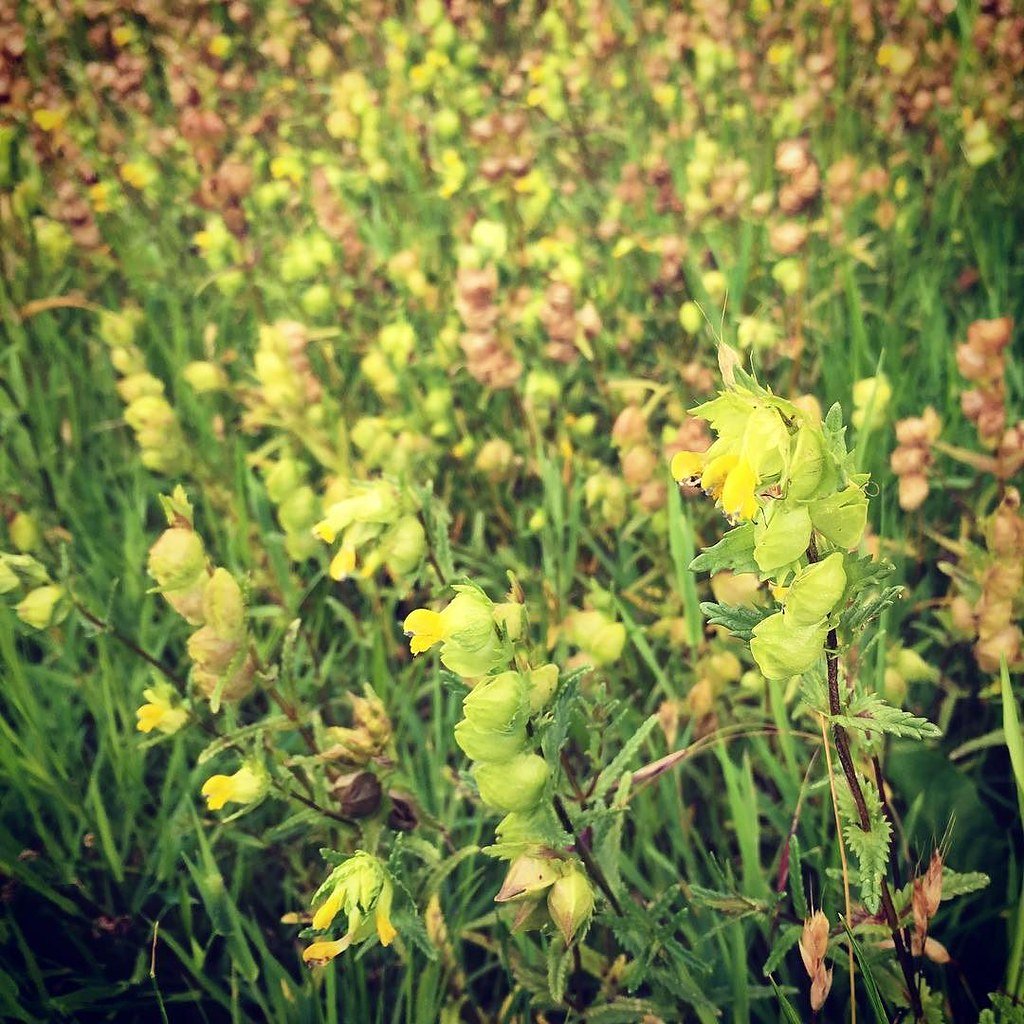Gardening
How to rewild your garden and help local wildlife
Join the ‘No Mow’ campaign and make a critical difference to local wildlife, by following these ideas in your own garden...
Start with a small area of your lawn. You can expand if all goes well!
This is a good opportunity to plant some fruit trees in the rewilded area. Make sure you choose ones that can pollinate each other.
For striking results within six months:
Remove all grass and top soil
Plant a mix of wildflower seed and grass-seed into dug-over soil
4. If you want to convert your lawn gradually:
Use semi-parasitic plants like yellow rattle to first weaken the existing grass.
Rake yellow rattle seed into your lawn in late summer/autumn.
The following spring you will notice the yellow rattle starting to grow (they will look like small nettle leaves at first but will soon show the characteristic yellow flowers).
Allow the yellow rattle to grow undisturbed until it has finished seeding (the pods have the distinctive rattle of the seeds inside when shaken, which will end after the seeds have dispersed.)
5. Maintain a rewilded lawn area
The key is to follow a two-year cutting cycle:
Year 1 - April and July
Year 2 - July and October
This cutting cycle only needs to be followed for the first 4 - 6 years. After that an annual cut in autumn or spring should suffice.)
It’s also really important to mow the rewilded lawn on the highest cutting height you can, maybe using a strimmer if practical.
It’s vital that all cuttings are picked up and composted at home or in your Brown Bin (so they don’t enrich the soil and add nutrients, which will favour grasses and dominant weeds).
Even with an annual cut, it's a good idea to leave a good proportion long over winter to provide shelter for invertebrates. You can even forego cutting for a few years once your 'meadow' is well established.
Promoting Biodiversity In Your Garden
• Grow flowers rich in nectar and pollen to encourage pollinators such as bees, butterflies and hoverflies. Lots of advice is readily available online or in books. Garden centres usually label pollinator-friendly plants, but beware that their plants often contain insecticides. You might try out the Bumble- bee Conservation trust’s BeeKind tool to see how bee- friendly your garden is (easily located online).
• Grow food-plants for butterflies and moths, such as lady’s smock, bird’s foot trefoil, ivy and nettles.
• Reduce your frequency of mowing – and allow your lawn (or part of it) to flower. You may be surprised by how many different flowers are already living in your lawn.
• Go one step further and create your own miniature wildflower meadow.
• Try to re-imagine ‘weeds’ as ‘wildflowers’, and save yourself an awful lot of time spent weeding by allowing them to grow! ‘Weedy’ plants like dandelions, ragwort, hogweed and herb Robert are great flowers for pollinators.
• When wooden fence panels rot and collapse, as they inevitably do after a few years, replace fences with a hedge of mixed, native plant species. This allows wildlife such as hedgehogs to pass through, provides food for caterpillars and pollinators, captures carbon as it grows, and will never need replacing!
• Buy or make a bee hotel: A fun project that children can get involved in. All you need to do is create horizontal, dead end holes of about 8-millimetre diameter, either by drilling in to a block of wood, or by bundling bamboo canes. Some commercial designs have windows, enabling you to peek in and see what the bees are doing inside their nests.
• Dig a pond and watch how quickly it is colonised by dragonflies, whirligig beetles, newts and pond skaters. Even tiny ponds, made by recycling an old sink or other waterproof container, can support abundant life. Make sure it is easy for any animal that falls in to climb out!
• Create a ‘hoverfly lagoon’, a small aquatic habitat for hoverflies to breed in.
• Grow your own healthy, zero-food-miles fruit and veg. Every lettuce or carrot you grow saves you money and removes all the environmental costs of that food being grown elsewhere, packaged and transported to your plate.
• Plant a fruit tree. These are available in dwarf sizes suitable for tiny gardens, the smallest of which can be grown in a large pot on a patio or roof terrace. Fruit trees provide blossom for pollinators and fresh fruit for you. There is a mouth-watering array to choose from: apples, pears, plum, quince, apricot, mulberry, peach, fig and more.
• Avoid pesticide use in your garden; they really aren’t necessary. If you simply leave pests alone, usually a lady- bird, hoverfly larva or lacewing will come along and eat them before long. If you have ornamental plants that are continually attacked by insect pests, you are probably trying to grow the wrong plant. Weeds can either be accepted as wildflowers, hand-weeded, or an old carpet or other impenetrable material can be used to smother them.
• Use companion planting to encourage pollination of vegetable crops and to attract natural enemies of crop pests. For example, French marigolds seem to help deter whitefly from tomatoes, and borage attracts pollinators to strawberries.
• Leave a ‘wild’ corner for nature, where you do nothing at all: your own tiny rewilding project.
• Provide a brash pile or log pile, leaving the wood to moulder down, sprouting fungi and supporting a myriad of tiny decomposers
• Build a compost heap and recycle kitchen scraps, generating your own fertile compost while providing a home for worms, woodlice, millipedes and more.
Advice kindly supplied by Chorleywood Parish Council Conservation Ranger, Daniel Du Gard and wildlife author and Professor of Biology at University of Sussex, Dave Goulson. Author of The Garden Jungle.





